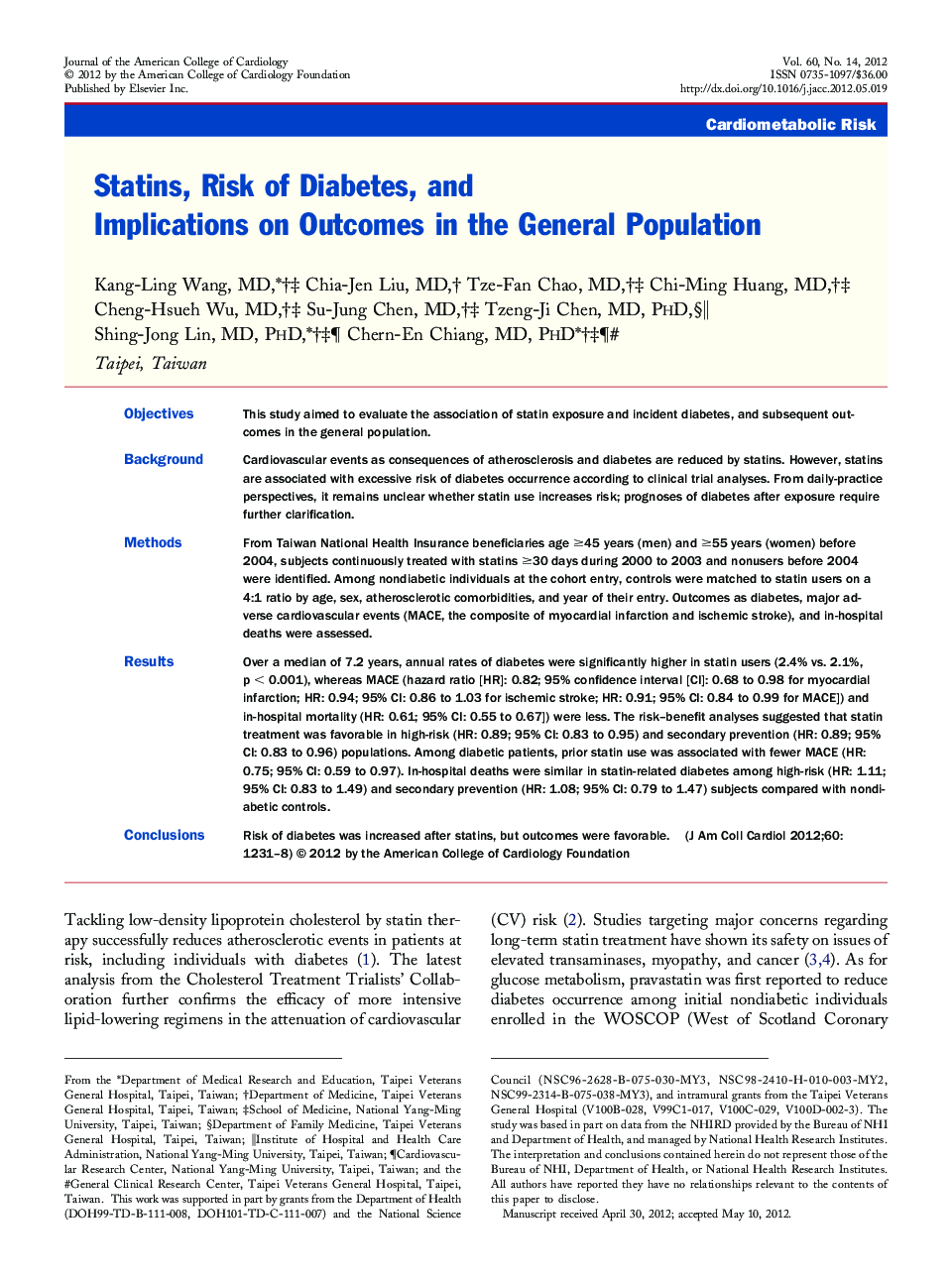| Article ID | Journal | Published Year | Pages | File Type |
|---|---|---|---|---|
| 2946986 | Journal of the American College of Cardiology | 2012 | 8 Pages |
ObjectivesThis study aimed to evaluate the association of statin exposure and incident diabetes, and subsequent outcomes in the general population.BackgroundCardiovascular events as consequences of atherosclerosis and diabetes are reduced by statins. However, statins are associated with excessive risk of diabetes occurrence according to clinical trial analyses. From daily-practice perspectives, it remains unclear whether statin use increases risk; prognoses of diabetes after exposure require further clarification.MethodsFrom Taiwan National Health Insurance beneficiaries age ≥45 years (men) and ≥55 years (women) before 2004, subjects continuously treated with statins ≥30 days during 2000 to 2003 and nonusers before 2004 were identified. Among nondiabetic individuals at the cohort entry, controls were matched to statin users on a 4:1 ratio by age, sex, atherosclerotic comorbidities, and year of their entry. Outcomes as diabetes, major adverse cardiovascular events (MACE, the composite of myocardial infarction and ischemic stroke), and in-hospital deaths were assessed.ResultsOver a median of 7.2 years, annual rates of diabetes were significantly higher in statin users (2.4% vs. 2.1%, p < 0.001), whereas MACE (hazard ratio [HR]: 0.82; 95% confidence interval [CI]: 0.68 to 0.98 for myocardial infarction; HR: 0.94; 95% CI: 0.86 to 1.03 for ischemic stroke; HR: 0.91; 95% CI: 0.84 to 0.99 for MACE]) and in-hospital mortality (HR: 0.61; 95% CI: 0.55 to 0.67]) were less. The risk–benefit analyses suggested that statin treatment was favorable in high-risk (HR: 0.89; 95% CI: 0.83 to 0.95) and secondary prevention (HR: 0.89; 95% CI: 0.83 to 0.96) populations. Among diabetic patients, prior statin use was associated with fewer MACE (HR: 0.75; 95% CI: 0.59 to 0.97). In-hospital deaths were similar in statin-related diabetes among high-risk (HR: 1.11; 95% CI: 0.83 to 1.49) and secondary prevention (HR: 1.08; 95% CI: 0.79 to 1.47) subjects compared with nondiabetic controls.ConclusionsRisk of diabetes was increased after statins, but outcomes were favorable.
